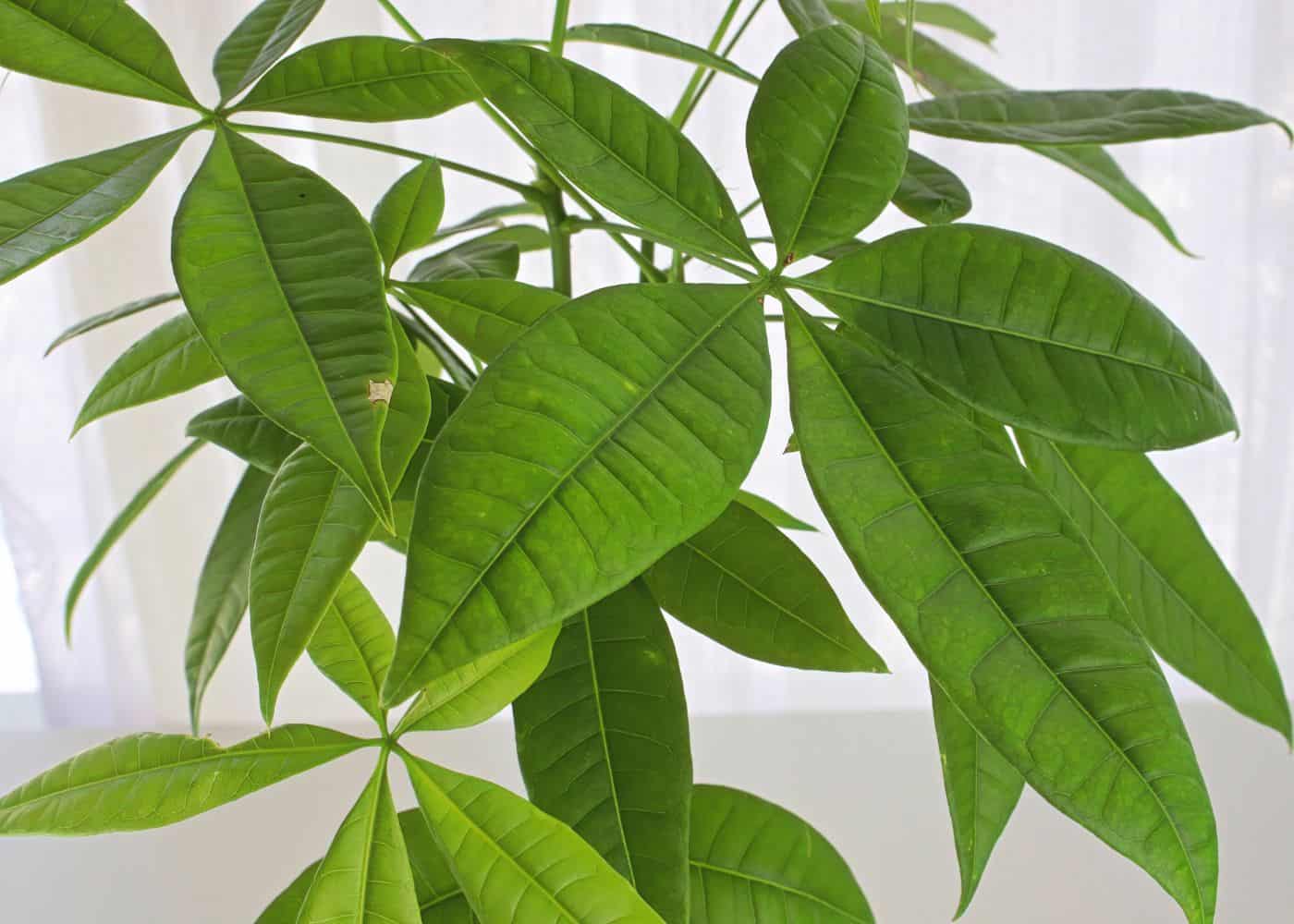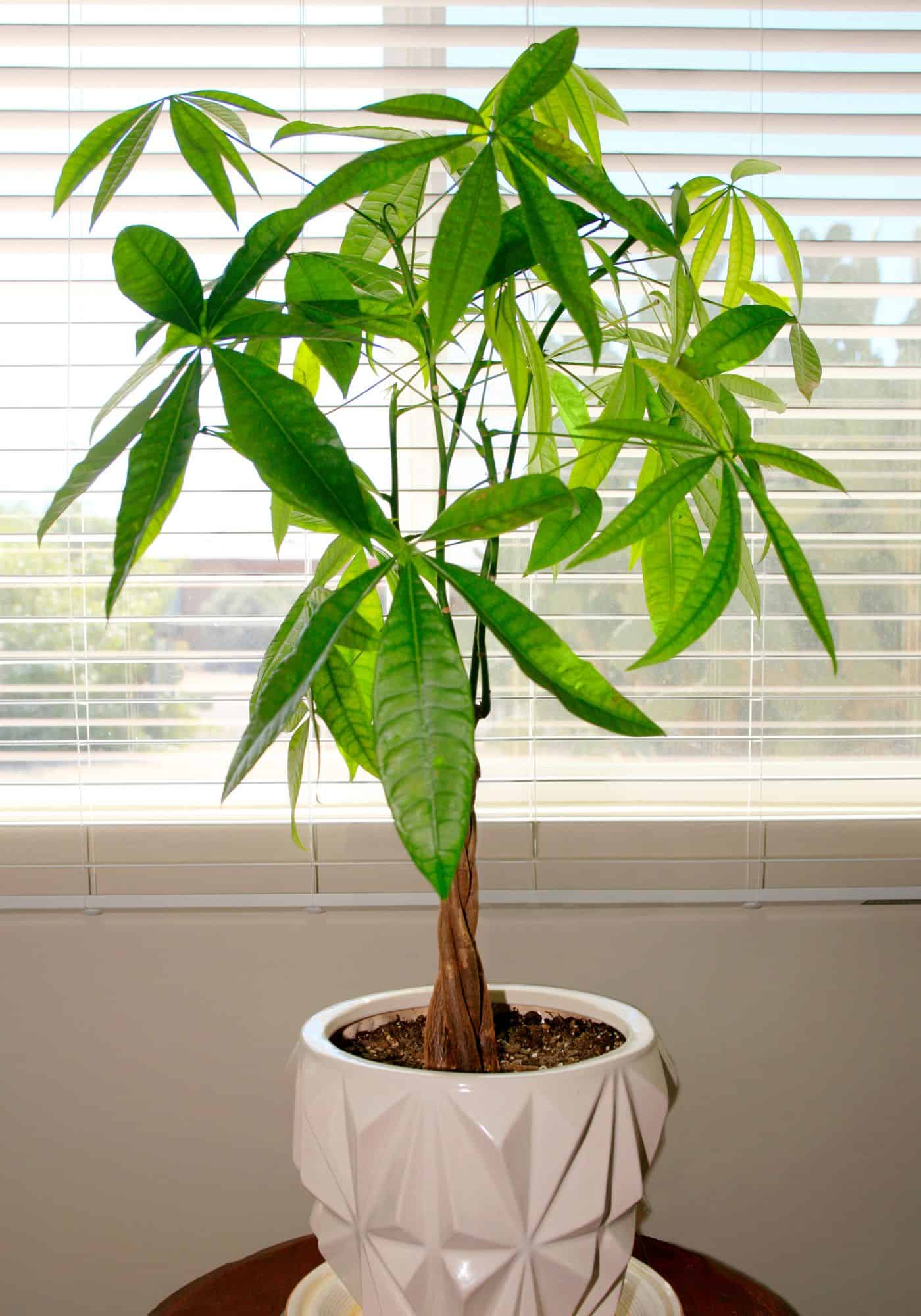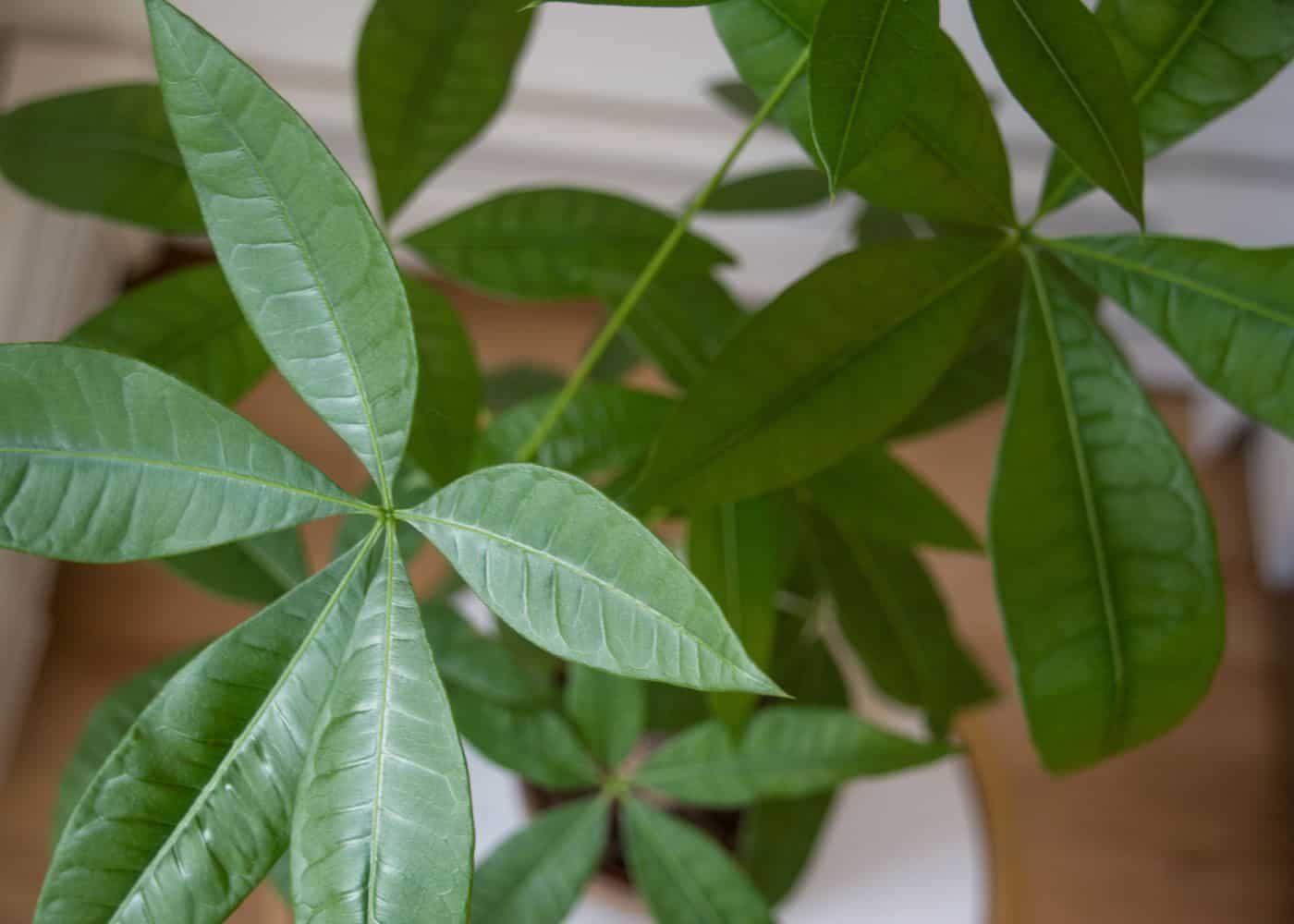Money Trees, scientifically known as Pachira aquatica, are favored for their long leaves, braided stems, and believed ability to bring their owners’ prosperity. Key to this function in Feng Shui is keeping the plant healthy and happy with the correct care, including fertilizing. Here are the basics about how to fertilize money tree!
Money Trees thrive with fertilizing once every 4-6 weeks or so, depending on growth and the chosen fertilizer. A balanced fertilizer with equal NPK values, along with secondary and micronutrients, will give the tree everything it needs. Follow the instructions on the packaging and consider applying at half strength to avoid overfertilizing.
Read on to learn all about feeding and caring for this lovely houseplant.

Why fertilizer is important for Money trees?
There are a few things plants rely on for growth and survival. Sunlight is one of them – the fuel for the process of photosynthesis that keeps plants alive. Water is also vital in photosynthesis and maintains structure in the plant’s cells. One thing we often forget about – possibly because it is likely taken care of when we buy our plants and isn’t a frequent maintenance task – is nutrients.
Much like humans, plants need a wide range of nutrients to survive, each serving slightly different purposes. The most important nutrients are called macronutrients, used up by plants in the largest amounts. This is what the letters NPK stand for on a bag of fertilizer – namely nitrogen, phosphorus, and potassium.
But that’s not all plants need. They also require secondary nutrients, also vital to growth but required in smaller amounts. At the bottom of the list are micronutrients like iron and boron that are needed in tiny amounts but can wreak havoc if they are lacking in the soil.
Money trees planted in pots only have access to so many nutrients in their contained environments. Once those nutrients are gone, they need to be replaced by you to maintain growth. That’s where fertilizer comes in.

How often do Money trees need fertilizer?
Money Trees do most of their growing when the weather is warm during spring and summer. This is when conditions closely match their native habitats, and they are happiest. While they don’t technically go completely dormant in fall and winter, they will naturally slow growth to stop any vulnerable new growth from facing cold damage.
That means they’ll use up the most nutrients during this peak growth. It’s best to focus all your fertilizing in the months of spring and summer. If the plant appears to be struggling in other seasons and you think nutrients are the issue, use a limited amount and don’t apply too often to avoid damaging the roots.
During peak growth, your Money Tree will likely need fertilizer every 4-6 weeks or so. This may change depending on the strength of the fertilizer and the performance of the plant. Stronger fertilizers should be diluted or applied less often, and slow-growing Money Trees in low-light areas are at higher risk of overfertilizing if fed too often.
Follow a monthly fertilizing routine when starting out, adjusting as needed if your Money Tree shows signs of overfertilizing.
What fertilizer is best for Money trees?
Money Trees don’t use up any particular nutrients more than others. To cover all areas of plant health, use a balanced fertilizer with equal parts nitrogen, phosphorus, and potassium. These slow growers don’t need high concentrations of nutrients either.
A balanced NPK fertilizer is often recommended, diluted to lower strength, but any equal NPK fertilizer will be suitable for these plants. Also, make sure your chosen product contains some secondary and micronutrients to avoid any deficiencies.
There are various different types of fertilizer to choose from. Liquid fertilizers are most common for houseplants, typically diluted in water before being poured over the soil with your regular watering routine. Slow-release fertilizer sticks are also popular and generally only applied once per season, but they can increase risks of overfertilizing if used incorrectly.

How much fertilizer do Money trees need?
The amount of fertilizer you apply will depend on which product you choose. Read the instructions to determine how much to apply and how much to dilute the product by.
As these plants grow relatively slowly compared to some other houseplants, it’s best to take the recommended amount and halve it. This maintains the levels of nutrients in the soil without overdoing it and risking overfertilizing.
Always start with a half-strength dose and apply more if you think your plant needs it. Underfertilizing is far easier to fix than overfertilizing.
Tips for fertilizing Money trees
If you’re still struggling to get fertilizing right, follow these extra tips to cover everything you need to know:
- If your plant stops growing suddenly, don’t assume fertilizer will fix the problem. Many care issues, including overwatering, lack of sunlight, and incorrect temperature, can lead to stunted growth. Fertilizing at these times will only cause the plant more stress.
- Overfertilizing will lead to yellowing and browning leaves soon after the fertilizer has been added. If you fear overfertilizing, flush the soil until it runs clear and stop fertilizing for several months. Try to use filtered water to prevent further salt build-up.
- Avoid using products other than tested fertilizers to feed your Money Tree. Things like Epsom salts and coffee grounds may contain some nutrients, but they are not complete fertilizers and may cause problems with growth if used excessively.






